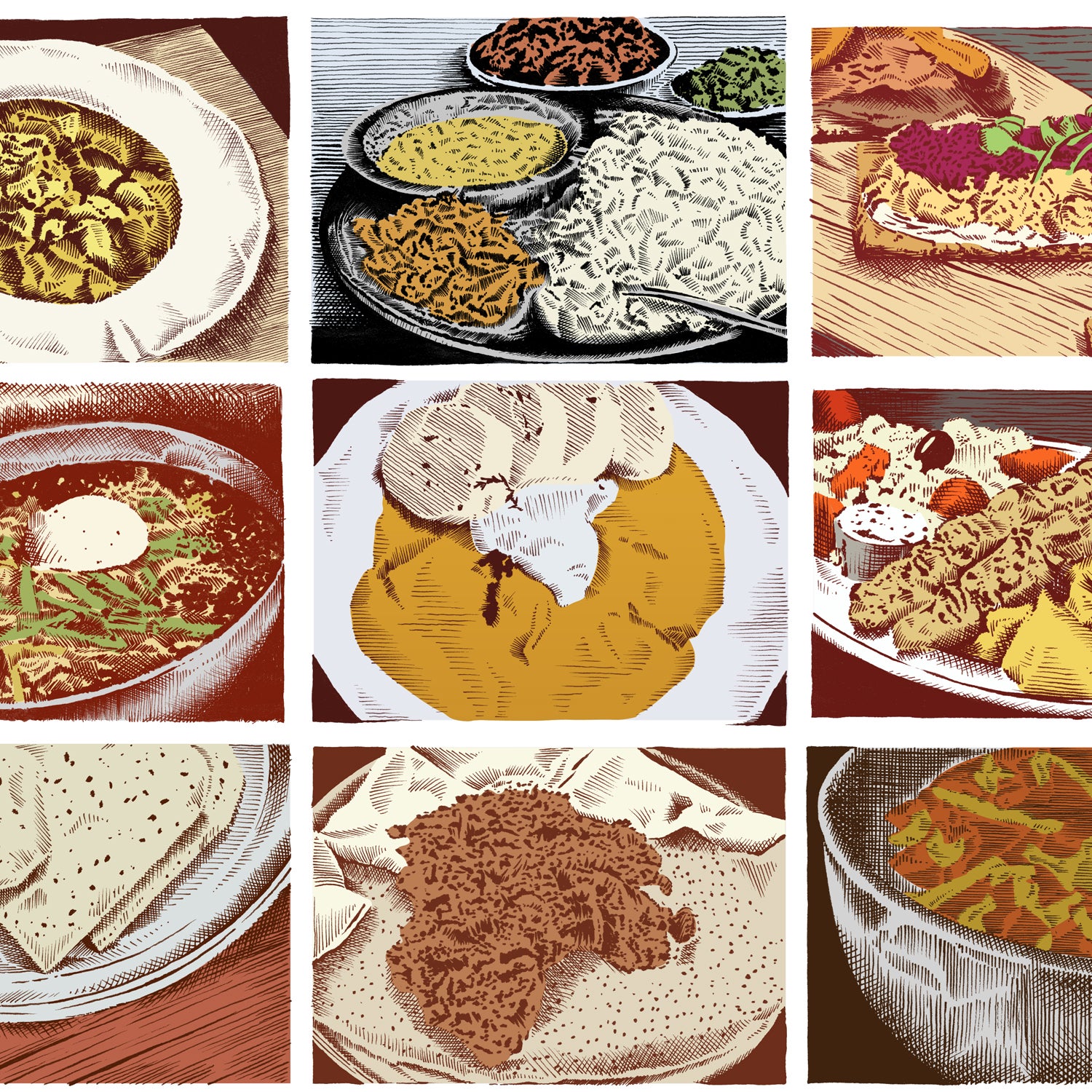The majority of us—TV viewers, fantasy strategists, and Olympics bingers—think of our athletic heroes as having high-powered nutritionists at their side, serving a militant diet where everything is as plain as oatmeal with a dot of honey. But many athletes around the world eat things that would surprise even the Chopped judging table.
“Most of the international athletes I’ve encountered tend to prefer what’s common in their home country. I’ve found that they don’t have bland diets,” says Shawn Arent, sports medicine and performance expert and director of the Center for Health and Human Performance at Rutgers University. “We’ve even seen a problem when foreign athletes come to the U.S. and access more processed foods. In many cases, I’ve seen those athletes gain quite a bit of weight as they adapt to different foods.”
We connected with athletes around the world to discover what’s in the training meal (or cheat meal) that they can’t get enough of.
Adam Ondra, Rock Climber, Czech Republic

In the Czech Republic’s southwestern city of Brno, climber Adam Ondra relies on local produce from the lowlands for superfoods. Colder months yield a side dish of raw sour cabbage that’s chock-full of vitamins. Poppy seeds are in every bread and bun on the plate or blended into a smoothie. For the traditional Czech taste, though, he turns to svickova: a thin cut of beef served with cream-based gravy, bread dumplings, and cranberry topping. The dish is made by the masters (grandmothers), and Ondra indulges once, maybe twice, a year—one must stay lean on the cliff faces.
Mira Rai, Trail Runner, Nepal

The petite, 108-pound Mira Rai puts away the remarkable amount of calories trail runners need by eating the traditional dish, dal bhat. The Nepalese staple includes a heaping pile of white or brown rice; a side bowl of lentils, spinach, and other mixed veggies; occasional slices of meat; and a spice mix of coriander, cumin, garam masala, and turmeric. Like all Nepalese dishes, dal bhat is eaten with the hands.
Atsede Baysa, Marathon Runner, Ethiopia

This year’s Boston Marathon winner, Atsede Baysa, lives and trains 45 miles west of Ethiopia’s centrally located capital of Addis Ababa, in a small town near the Chilimo-Gaji forest. She supplements standard starch and protein combos of pasta and fish with national treasure injera chechebsa. Injera is Ethiopia’s sour and spongy bread, rich in both iron and carbohydrates. Chechebsa, commonly known as kita firfir, is fried injera seasoned in a berbere sauce made with hot red pepper powder, all served with honey. The dish provides protein and fat for Baysa, who eats it with a tilapia-like white fish called Nile perch.
Jain Kim, Rock Climber, South Korea
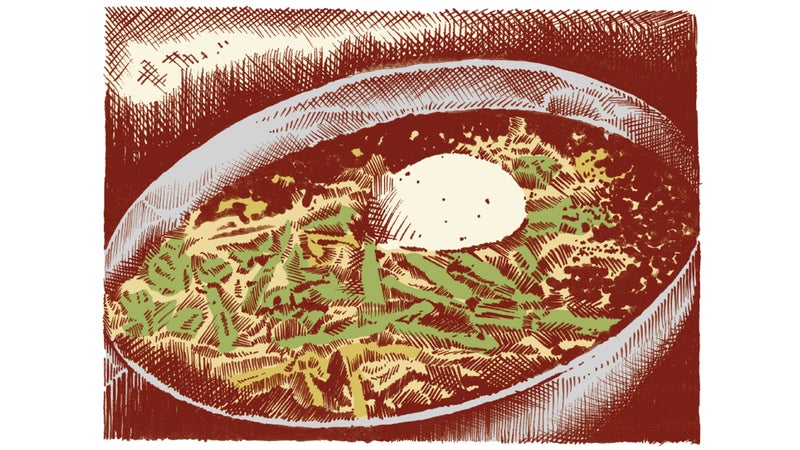
The summer heat in South Korea calls for cold noodle soup, and climber Jain Kim favors the wildly popular naengmyeon. Seldom served in other Asian countries, the buckwheat noodle soup comes with sliced beef, cucumbers, Korean pear, and a soft-boiled egg. A simpler variation, called mul-naengmyeon, relies on beef broth alone, but Kim opts for the bibim-naengmyeon, which incorporates spicy red chili peppers into the broth.
Max Matissek, Windsurfer, Greece

Some of the best local produce in Naxos, Greece, are juicy tomatoes, which windsurfer Max Matissek eats on top of daily salads with Naxian cheese—imagine a hybrid of cottage cheese and feta. His protein comes from chicken souvlaki, the lightly marinated meat skewers over rice, with a side of Naxian potatoes—oven-roasted and mixed with local olive oil, garlic, lemon, and pepper.
Mo Hrezi, Marathon Runner, Libya/United States
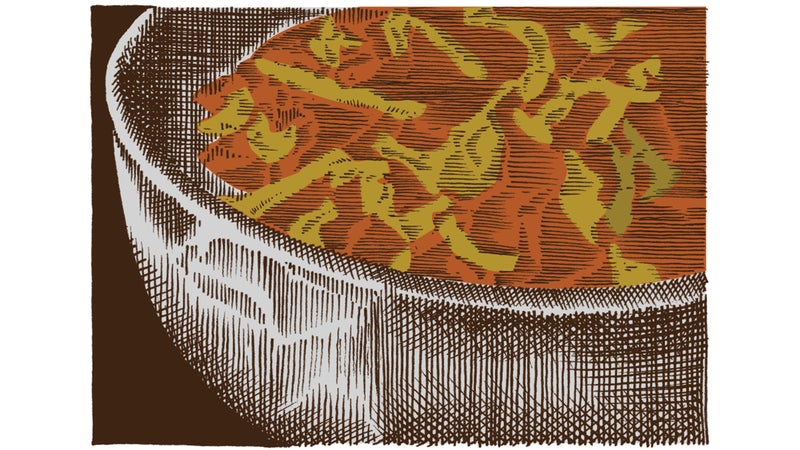
As a former Italian colony, Libya boasts cuisine with Mediterranean, North African, and Middle Eastern influences. The country’s residents take the preparation and sharing of food seriously, and Mo Hrezi, a Libyan-American runner with a carb-heavy, spicy-infused diet, is no exception. When he visits his parents and sisters in Tripoli, where he hopes to one day move back after finishing college, his most savored dish is rishdet burma, a warm, soupy, spicy bowl of homemade pasta with a tomato base, chickpeas, fava beans, lentils, fenugreek, and gideed (dried and salted meat).
Farida Osman, Swimmer, Egypt/United States

For Olympic swimmer Farida Osman, the late-morning spread in her Zamalek neighborhood of Cairo includes ful medames—local beans seasoned with olive oil, lemon, and cumin—and traditional molokheya, made by mixing the dish’s namesake plant leaves with coriander, garlic, and chicken stock. Keeping with the sharp flavors of Egyptian cuisine, Osman tops her dishes with roumy, the native crumbly cheese similar to a manchego.
Irina Sazonova, Gymnast, Iceland
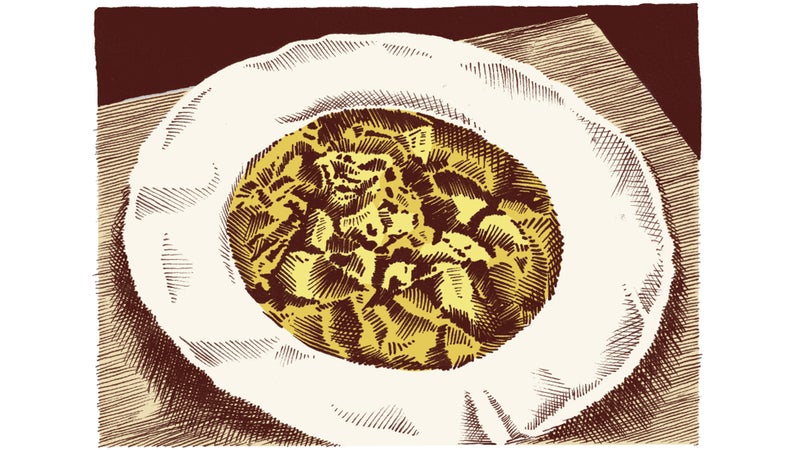
In her hometown of Reykjavik, the nation’s capital, 24-year-old gymnast Irina Sazonova prefers meat-centric dishes like kjötsúpa (Icelandic lamb soup). The lean meat is raised more responsibly than anywhere else in the world thanks to Iceland’s robust agriculture regulations. Cuts are often served bone-in, and the soup adjoins plenty of thyme, oregano, carrots, cauliflower, potatoes, brown rice, and rutabaga (turnip).
Annika Langvad, Cross-Country Mountain Biker, Denmark
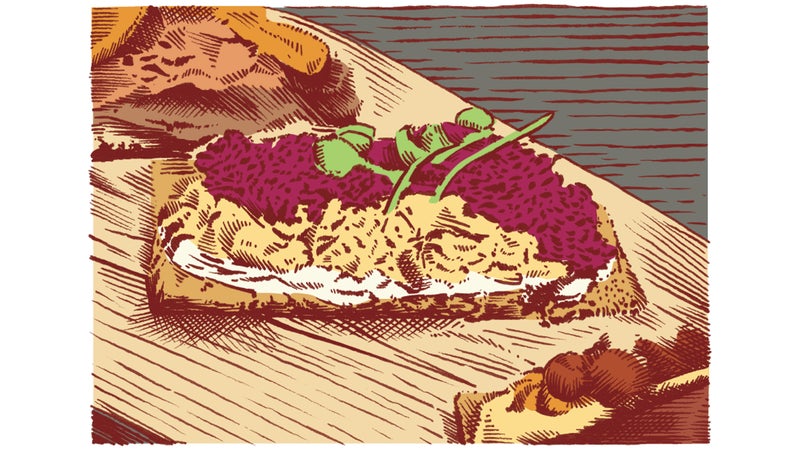
When in Copenhagen, childhood staples reign supreme for daytime snacks, and it’s all about the nationwide-favorite smørrebrød at lunch. For Langvad, a small, thin slice of Danish-style rye bread serves as the base for the open-faced sandwich. Her favorite topping combination includes warm leverpostej (liver paté meat spread) with pickled beets and fresh herbs. The Danes often take their smørrebrød simple, like Langvad’s, but that doesn’t mean you can’t find tricked-out combinations, like a smoked halibut rillette with pickled radish, capers, and rosemary.


